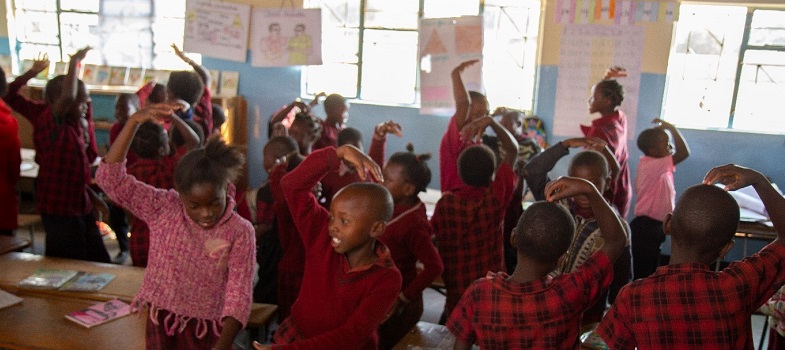Training guide
2. Being inclusive
2.2. Being inclusive in the classroom
Activity 2.3: Being inclusive
Watch the video below which shows a Grade 1 teacher being inclusive. As you watch, make notes in your Teacher Notebook.
Working in groups of two or three, plan an activity to try in your lesson which uses one of the ideas from the first two lists above. You can use the classroom examples provided below to help you. Try out your activity in a lesson. Afterwards, note down in your Teacher Notebook any observations you made and be prepared to discuss your experience with a colleague. If there is the opportunity to observe each other, ask your colleague to focus on one or two children and to notice how involved they are in the lesson. |
Classroom Example 2.1: Science
Read Martha’s experience of teaching integrated science. How does she ensure all learners take part in the lesson? Martha was teaching integrated science to Grade 3. They need to know the main parts of the human skeleton (skull, neck, arms, ribs, hips, legs, feet, spine). Although their lessons are in the local language, Martha knows that next year, they will be taught in English. She uses an old cereal packet to make ten sets of labels for the parts of the body. She writes the Zambian word on one side and the English word on the other side. She arranges the children in groups of six. One child acts as the model, and one child holds the cards and reads out the Zambian words. The other children have to decide where on the model they should put the card. When they have used all the cards, they check the model of the group next to them. She asks them to change roles and repeat the process, but to use the English word instead. At the end each child draws a picture of a figure and labels the skeleton using the Zambian and the English word. |
|
Did you notice...
|
Classroom Example 2.2: Social studies
Listen to the audio below or read about how teacher James ensures all learners are included when he teaches about the Zambian family in his class. Audio transcript James teaches social studies to Grade 7. Their examination is fast approaching and he is getting a bit behind with the syllabus. The next topic is the Zambian Family. He is apprehensive about teaching this topic because he is aware that Precious’ mother has recently died after a long illness and he’s worried that talking about families will make her sad. He talks to the Grade 6 teacher, Namwinga, who taught them last year. She remembers that in that class Changu is looked after by her granny and Joseph’s family is headed by his older sister. So there are several types of family in the class. By focusing on this, she suggests James could emphasise that whatever the type of family, the reasons why families are important still apply. Before the lesson he gets to talk to Changu and Joseph and tells them about Precious. He asks them to sit near her during the lesson. He also asks Precious how she and her brothers and sisters are coping. He tells her they will be talking about families and that Changu and Joseph would like to work with her as they are in a similar situation. James starts the lesson with a brainstorming session about all the different types of family groups that exist. The class suggests nuclear families, extended families, single-parent families, child-headed families. They do a quick survey of all the different kinds of family in the class and then work in groups to discuss why humans live in families and why it is important to respect differences in family types. In Maths the next day they draw a bar-chart of the results.
(Adapted from TESSA Life Skills Module 2, Section 2). |
|
Did you notice...
|
